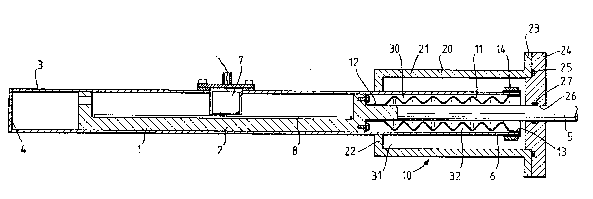Une partie des informations de ce site Web a été fournie par des sources externes. Le gouvernement du Canada n'assume aucune responsabilité concernant la précision, l'actualité ou la fiabilité des informations fournies par les sources externes. Les utilisateurs qui désirent employer cette information devraient consulter directement la source des informations. Le contenu fourni par les sources externes n'est pas assujetti aux exigences sur les langues officielles, la protection des renseignements personnels et l'accessibilité.
L'apparition de différences dans le texte et l'image des Revendications et de l'Abrégé dépend du moment auquel le document est publié. Les textes des Revendications et de l'Abrégé sont affichés :
| (12) Demande de brevet: | (11) CA 2007084 |
|---|---|
| (54) Titre français: | MOYENS D'ETANCHEITE ET APPAREILS POURVUS DE CES MOYENS |
| (54) Titre anglais: | SEALS AND APPARATUS INCLUDING SEALS |
| Statut: | Réputée abandonnée et au-delà du délai pour le rétablissement - en attente de la réponse à l’avis de communication rejetée |
| (51) Classification internationale des brevets (CIB): |
|
|---|---|
| (72) Inventeurs : |
|
| (73) Titulaires : |
|
| (71) Demandeurs : |
|
| (74) Agent: | SMART & BIGGAR LP |
| (74) Co-agent: | |
| (45) Délivré: | |
| (22) Date de dépôt: | 1990-01-03 |
| (41) Mise à la disponibilité du public: | 1990-08-08 |
| Requête d'examen: | 1996-08-08 |
| Licence disponible: | S.O. |
| Cédé au domaine public: | S.O. |
| (25) Langue des documents déposés: | Anglais |
| Traité de coopération en matière de brevets (PCT): | Non |
|---|
| (30) Données de priorité de la demande: | ||||||
|---|---|---|---|---|---|---|
|
ABSTRACT OF THE DISCLOSURE
Linear displacement optical transducers have a
movable carriage supporting an optically encoded track
which is movable along a cylinder supporting an optical
read head. In the present invention, the transducer is
sealed by a tubular flexible bellows which extends within
the cylinder, is joined at one end to the carriage and at
the other end to an open end of the cylinder. A
compensation chamber is sealed to the outside of the
cylinder to enclose a major part of the length of the
bellows and forms a sliding seal with a push-rod coupled
with the carriage. The bellows encloses a first volume of
a dry inert gas within the cylinder to one side of the
bellows and a second, similar volume of gas on the other
side of the bellows and in the compensation chamber.
Displacement of the carriage causes only a small change in
pressure across the bellows which is accommodated by
flexure. The compensation chamber isolates the bellows
from atmospheric pressure change and ensures that
temperature change affects both volumes equally,
minimizing pressure difference across the bellows.
Note : Les revendications sont présentées dans la langue officielle dans laquelle elles ont été soumises.
Note : Les descriptions sont présentées dans la langue officielle dans laquelle elles ont été soumises.

2024-08-01 : Dans le cadre de la transition vers les Brevets de nouvelle génération (BNG), la base de données sur les brevets canadiens (BDBC) contient désormais un Historique d'événement plus détaillé, qui reproduit le Journal des événements de notre nouvelle solution interne.
Veuillez noter que les événements débutant par « Inactive : » se réfèrent à des événements qui ne sont plus utilisés dans notre nouvelle solution interne.
Pour une meilleure compréhension de l'état de la demande ou brevet qui figure sur cette page, la rubrique Mise en garde , et les descriptions de Brevet , Historique d'événement , Taxes périodiques et Historique des paiements devraient être consultées.
| Description | Date |
|---|---|
| Le délai pour l'annulation est expiré | 1999-01-04 |
| Demande non rétablie avant l'échéance | 1999-01-04 |
| Réputée abandonnée - omission de répondre à un avis sur les taxes pour le maintien en état | 1998-01-05 |
| Toutes les exigences pour l'examen - jugée conforme | 1996-08-08 |
| Exigences pour une requête d'examen - jugée conforme | 1996-08-08 |
| Demande publiée (accessible au public) | 1990-08-08 |
| Date d'abandonnement | Raison | Date de rétablissement |
|---|---|---|
| 1998-01-05 |
Les titulaires actuels et antérieures au dossier sont affichés en ordre alphabétique.
| Titulaires actuels au dossier |
|---|
| SMITHS INDUSTRIES PUBLIC LIMITED COMPANY |
| Titulaires antérieures au dossier |
|---|
| RONALD ALFRED MASOM |